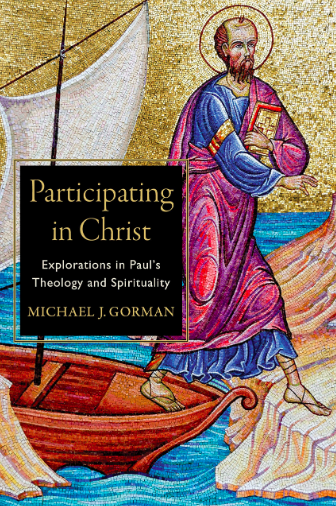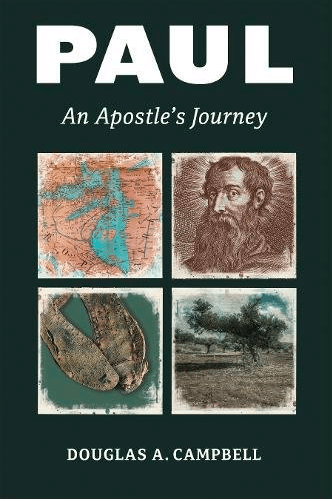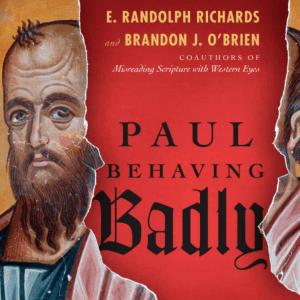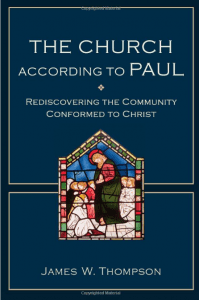 God-likeness is Christ-likeness, and if Christ is the crucified one, then both God is cruciform and the Christian is designed to become cruciform. The call to holiness and to love is the call to be conformed to Christ and to God, and if God reveals himself in Christ’s love in the cross and resurrection, then God-liness and Christ-likeness are both cruciformity.
God-likeness is Christ-likeness, and if Christ is the crucified one, then both God is cruciform and the Christian is designed to become cruciform. The call to holiness and to love is the call to be conformed to Christ and to God, and if God reveals himself in Christ’s love in the cross and resurrection, then God-liness and Christ-likeness are both cruciformity.
This is is the important thesis of Michael Gorman in his exceptional study, Inhabiting the Cruciform God: Kenosis, Justification, and Theosis in Paul’s Narrative Soteriology. My Paul class at Northern Seminary read Michael’s book and one comment was rather common: “Man, this guy sure does pile on some terms.” He does, but just stick with him a few pages, you’ll catch the meanings and then you can follow him cleanly and easily.
Response? What do you think of Paul’s idea of salvation as “cruciform theosis”?
So, I’ve grabbed one of his central thesis statements in the book, provide it here with new line breaks, and then I’ll unpack it a bit:
Because the faithful and loving crucified Christ is the image and self-revelation of God,
the paradoxical process of justification by co-crucifixion, or resurrection through conformity to the crucified Christ,
means that the pisteueontes (“believers”) are those who are becoming like God and thus
experiencing the process of theosis inasmuch as they embody the symbiosis of fidelity and love found in the Son of God.
Whew! This is on p. 90. It’s exceptionally clear even if it is not plain English. I shall explain it now:
1. God reveals what God is like and who God is in Christ, and that means God reveals “God-ness” in the cross and resurrection. What we see in Christ is the faithful Son, the one who is faithful to the covenant, and what we see is the loving Son, the one who loves both God and loves others — so what we see in Christ and therefore in God is the covenant faithfulness and love of God. We see God in the cross. God is cruciform. Let that dig in a bit.
This “faithful and loving crucified Christ” has a story, and Paul’s master story is told in Philippians 2:6-11. Gorman proposes that “because he was in the form of God” is a reliable translation and not just “although he was in the form of God.” The divine pattern at work is although/because (status), not (selfishness) but (selflessness).
2. We are justified by faith, but faith in Paul’s letter is more than assent and more than logical conclusion; faith in Paul’s letters is about co-crucifixion and co-resurrection. That is, faith is participating in the death and resurrection of Christ. That is, faith is participating in the revelation of who God is and what God does.
3. Justification is by faith, but if faith is about co-crucifixion then justification is by co-crucifixion. The debate over the years is whether justification is a legal fiction or simply a forensic declaration. Gorman says No! What is justification?
… restoration to right covenant relations with God and others by participation in Christ’s quintessential covenantal act of faith and love on the cross;
this one act fulfilled both the ‘vertical’ and the ‘horizontal’ requirements of the Law, such that those who participate in it experience the same life-giving fulfillment of the Law and therein …
begin the paradoxical, christologically grounded process of resurrection through death (45).
They are liberated from Sin and sins. Justification entails transformation; justification is synonymous with reconciliation. The theological rift between justification and sanctification is illegitimate.
4. The believer, the co-crucified and the co-raised, participate in that death and resurrection and in that act of participating begin to become like God. They are entering into theosis.
Holiness is one such expression of this: and holiness is cruciform, too. “Be ye cruciform for I am cruciform.” Holiness is about being cruciform.
5. What God reveals in the cross and resurrection is the love of God and the faithfulness of Christ to God — Christ’s covenant fidelity — to the ways and life of God itself.
Now to sum up the whole: for Paul, salvation is cruciform theosis. Salvation is about becoming like God, the God who is revealed in the cross and resurrection.











